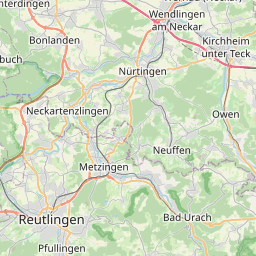Description: Das Projekt "Untersuchung der Ökologie von Zecken als Überträger von Krankheitserregern in Baden-Württemberg im Bezug auf Habitat, Landnutzung, Wirtstiere und Klima, Teil 4: Kontrolle der Zeckenaktivität" wird/wurde gefördert durch: Ministerium für Umwelt, Klima und Energiewirtschaft Baden-Württemberg. Es wird/wurde ausgeführt durch: Universität Hohenheim, Institut für Zoologie, Fachgebiet Tierökologie.Zecken und von Zecken übertragene Krankheiten sind von großer Bedeutung für die Gesundheit von Mensch und Tier. Über die Faktoren, die ihre Verbreitung und Dynamik beeinflussen, ist allerdings nur wenig bekannt. In diesem Projekt werden Spezialisten aus verschiedenen Fachbereichen zusammen-arbeiten, um den Einfluss von Wetter, (Mikro)Klima, Habitat, Landnutzung, menschlichen Eingriffen und die Populationsdynamik den Wirtstieren auf die Verbreitung und Dynamik von Zecken und den von ihnen übertragenen Krankheitserregern in Baden-Württemberg zu bestimmen. Das Projekt ist in vier Module unterteilt. Im ersten Modul konzentrieren wir uns auf die Verbreitung von Zecken in gesamt Baden-Württemberg, im zweiten Modul untersuchen wir im Detail, inwiefern Mikroklima, Habitat und Wirtstiere die Populationsdynamik von Zecken beeinflussen. Zecken, die im ersten und zweiten Modul gesammelt werden, werden im dritten Modul auf zeckenübertragene Pathogene und ihre Dynamik untersucht. Das vierte Modul beinhaltet eine übergreifende Analyse aller Daten, um die relative Bedeutung der untersuchten Faktoren zu bestimmen und um damit ein Risikomodel zu erstellen, das die Bedeutung von Klimaveränderungen für zeckenübertragene Krankheiten in Baden-Württemberg mit einbezieht.
Types:
SupportProgram
Origins:
/Bund/UBA/UFORDAT
Tags:
Populationsdynamik
?
Baden-Württemberg
?
Tierökologie
?
Zecke
?
Ökologie
?
Zoologie
?
Wirtsorganismus
?
Habitat
?
Energiewirtschaft
?
Flächennutzung
?
Kontrollmaßnahme
?
Mikroklima
?
Parasit
?
Risikoanalyse
?
Tierkrankheit
?
Umweltforschung
?
Biologische Aktivität
?
Modellierung
?
Mikroklimatische Wirkung
?
Anthropogener Einfluss
?
Infektion
?
Klimawandel
?
Klimawirkung
?
Krankheitserreger
?
Wetter
?
Region:
Baden-Württemberg
Bounding boxes:
9° .. 9° x 48.5° .. 48.5°
License: cc-by-nc-nd/4.0
Language: Deutsch
Organisations
Time ranges:
2012-04-01 - 2015-07-31
Alternatives
-
Language: Englisch/English
Title: Research into the ecology of ticks as vectors of pathogens in Baden-Württemberg in relation to habitat, land use, hosts and the climate; Part 4: Monitoring tick activity
Description: During the year 2014 the data collection for the project was continued as outlined in the first and second interim reports. Thus, data are now available for the period May 2012 to December 2014 with the prospect of continuing until May 2015, providing a full 3 years of data. This has allowed us continue with our qualitative and quantitative analyses. Variation continues to be substantial among the intensively studied and small scale sites for both the biotic and abiotic (including microclimatic) parameters within and between years. The mean density of nymphs, for example, varied from 0 to 120/100m2 between sites for 2013, while for 2014, although substantial intersite variability occurred, the density ranges between 0 and less than 50 nymphs/100m2. Both bimodal (spring and autumn) and unimodal (spring) peaks occurred depending on the site and year, indicating that the bimodal scenario expected for Central Europe does not always occur. This has substantial implications for transmission risk analysis. There were also differences between years when comparing small mammal activity in the intensively studied sites. After the dramatic reduction in rodent populations following the long, cold winter of 2012/2013, the all populations recovered in 2014 to the levels seen in 2012 except for the higher altitude Black Forest site which remained at the same level as 2013. Over the 3 years of the study to date, a total of 18,937 ticks were collected from small mammals. Of these 94.2% were I. ricinus (larvae 92.6%, nymphs 1.6%) together with limited numbers of Dermacentor reticulatus (5.1%), Ixodes acuminatus (0.3%) and Ixodes trianguliceps (0.4%). Difference between years and sites were the rule rather than the exception. As with data from dragging for nymphs, both unimodal and bimodal (and in one case trimodal) patterns of abundance were found for larvae. At not site was the same pattern of abundance found over all three years. Due to reduced funding, the analysis of pathogens has not yet been finalized. Data have, however, become available for Candidatus Neoehrlichia mikurensis for 2013. These show generally high prevalences with substantial geographical differences with values at the intensive stations ranging from 0% (Black Forest) to 23.58% (Hardtwald). The first large scale analysis of data was initiated in cooperation with Prof. Dr. F. Rubel from the University of Veterinary Medicine, Vienna, Austria. This has produced the first map of its type in Europe of I. ricinus nymph abundance, based on a general linear model taking into consideration climate grid data from the German Weather Service. Abundance is calculated on a 5x5 km grid system. The model accounts for 78% of the variability in the tick data collected.
https://ufordat.uba.de/UFORDAT/pages/PublicRedirect.aspx?TYP=PR&DSNR=1035755
Resources
Status
Quality score
- Overall: 0.48
-
Findability: 0.57
- Title: 0.22
- Description: 0.21
- Identifier: false
- Keywords: 1.00
- Spatial: RegionIdentified (1.00)
- Temporal: true
-
Accessibility: 0.67
- Landing page: Specific (1.00)
- Direct access: false
- Publicly accessible: true
-
Interoperability: 0.00
- Open file format: false
- Media type: false
- Machine-readable metadata: false
- Machine-readable data: false
-
Reusability: 0.67
- License: ClearlySpecifiedAndFree (1.00)
- Contact info: false
- Publisher info: true
Accessed 1 times.






